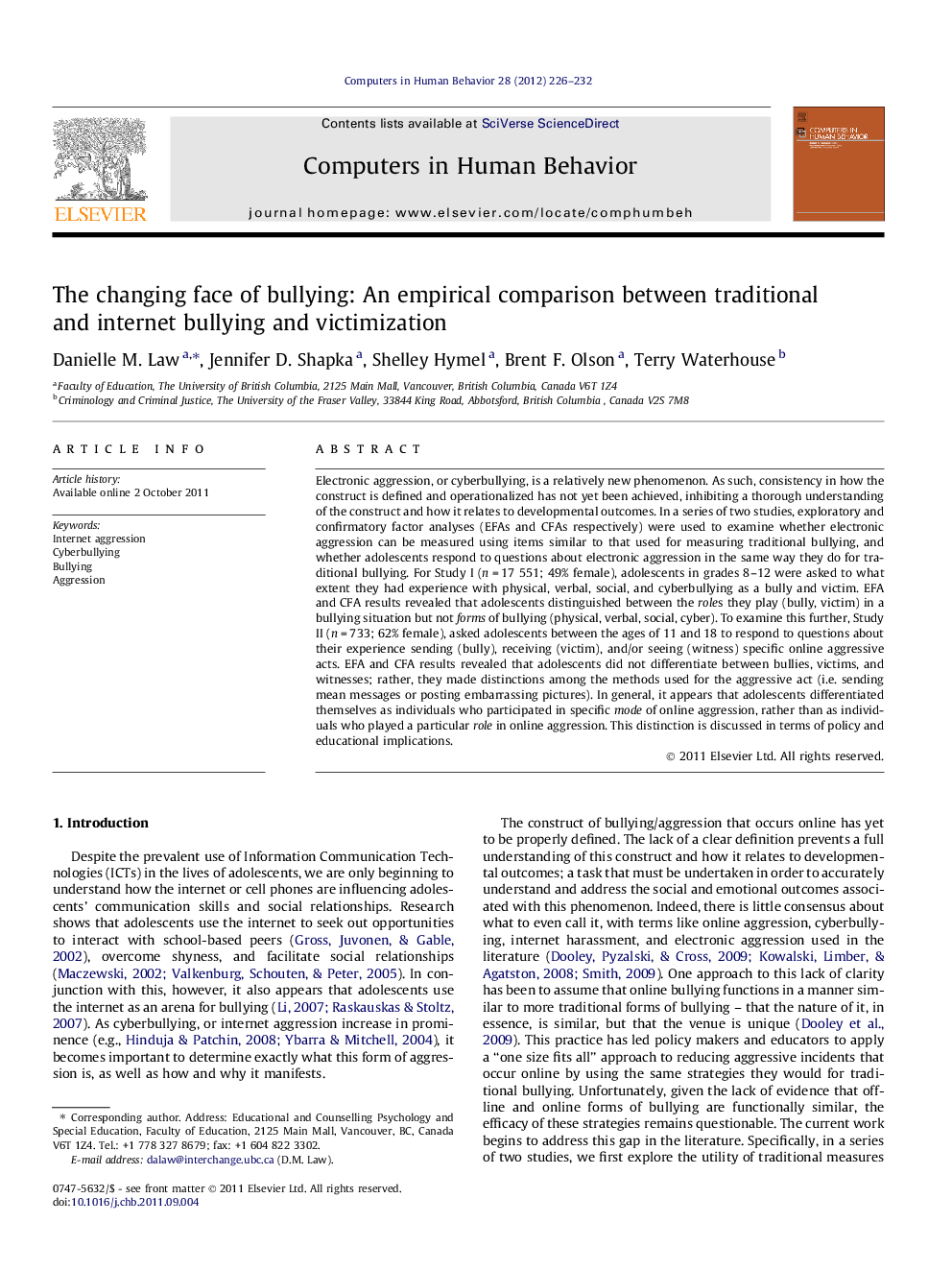| کد مقاله | کد نشریه | سال انتشار | مقاله انگلیسی | نسخه تمام متن |
|---|---|---|---|---|
| 351566 | 618472 | 2012 | 7 صفحه PDF | دانلود رایگان |

Electronic aggression, or cyberbullying, is a relatively new phenomenon. As such, consistency in how the construct is defined and operationalized has not yet been achieved, inhibiting a thorough understanding of the construct and how it relates to developmental outcomes. In a series of two studies, exploratory and confirmatory factor analyses (EFAs and CFAs respectively) were used to examine whether electronic aggression can be measured using items similar to that used for measuring traditional bullying, and whether adolescents respond to questions about electronic aggression in the same way they do for traditional bullying. For Study I (n = 17 551; 49% female), adolescents in grades 8–12 were asked to what extent they had experience with physical, verbal, social, and cyberbullying as a bully and victim. EFA and CFA results revealed that adolescents distinguished between the roles they play (bully, victim) in a bullying situation but not forms of bullying (physical, verbal, social, cyber). To examine this further, Study II (n = 733; 62% female), asked adolescents between the ages of 11 and 18 to respond to questions about their experience sending (bully), receiving (victim), and/or seeing (witness) specific online aggressive acts. EFA and CFA results revealed that adolescents did not differentiate between bullies, victims, and witnesses; rather, they made distinctions among the methods used for the aggressive act (i.e. sending mean messages or posting embarrassing pictures). In general, it appears that adolescents differentiated themselves as individuals who participated in specific mode of online aggression, rather than as individuals who played a particular role in online aggression. This distinction is discussed in terms of policy and educational implications.
► Do adolescents interpret cyberbullying items the same way they do offline bullying items?
► Data from two studies reveal they do not.
► Traditional bullying students differentiate between role (bully and victim).
► Cyberbullying they categorize by mode (mean messages/pictures; make mean website).
► Cyberbullying cannot be measured in the same way as offline bullying.
Journal: Computers in Human Behavior - Volume 28, Issue 1, January 2012, Pages 226–232